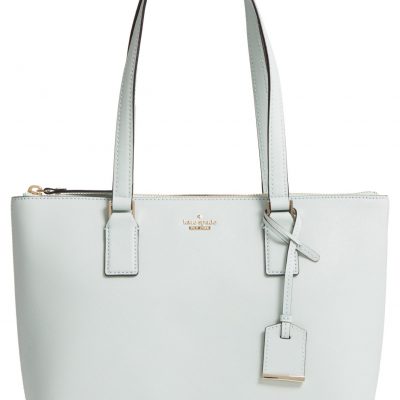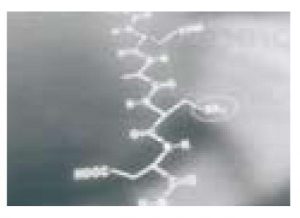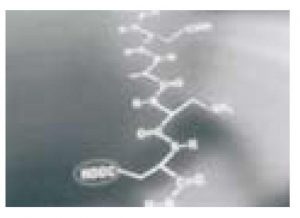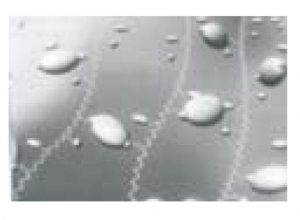
Because of the pollution caused by chrome tanning and the problems with plant tanning in making soft, light-colored leathers, scientists have been looking for years for alternative methods such as Easywhite for chrome tanning. In recent years, the Wetwhite method has been used as a suitable method for chromium-free tanning. In this method, the main basis of the work is based on aldehyde tanning system. But since the leathers made through wetwhite system face serious challenges in making waterproof leathers, so scientists are trying to find new alternative methods on Overcome these challenges.
The use of Easywhite method instead of wetwhite system by Mr. Mark Bartle is one of the results of research on chromium-free tanning methods, which, while having chromium tanning properties and aldehyde tanning advantages, is free from the disadvantages of both methods.
The main article entitled: The advantage of EasyWhite Tan leather in retanning, dyeing and fatliquoring “processes” was published in January 2012 in world leather magazine.
In re-tanning, dyeing and oiling processes, the Easywhite tanning method was first used in the manufacture of automobile leather. But later it was found that this method has the properties of chrome leather, so its use in the manufacture of various types of leather, including leather Shoes, clothes, furniture and all kinds of vegetable leather became common.
Prior to the introduction of the Easywhite method, it was impossible to use bleached vegetable leathers to make shoe uppers, waterproof uppers, suede, nubuck, aniline or semi-aniline leathers, and other white or light-colored leathers.
In addition, there was a restriction on the use of vegetable leather in the manufacture of automobile leathers, clothing and gloves, and the lining of white or light-colored shoes.
The introduction of the Easywhite method has changed the state of production. This means that many types of leathers that were previously impossible to make with the white-based method are now possible with this method.
Not only does the Easywhite method use less material and dye in the re-tanning step, but it also reduces the release of unstable chemicals in Wet-white leathers.
Five to six chemicals such as salt, acid and alkalis are used in all stages of standard tanning systems. It is necessary to control pH and temperature in all stages. This indicates that careful control and inspection should be done during the leather manufacturing process. . The first advantage of the Easywhite method over other methods is the elimination of acidification, recycling or stabilization steps. These steps are common in chrome and vegetable tanning.
In Easywhite method, only Granofin Easy 90-F tanning material is used along with oil. The temperature and volume of water consumption are controlled and adjusted for one time, and in other stages, no further controls are needed. Thus, the possibility of errors in the method There are other types of tanning, it is eliminated in this method and while facilitating the leather making process, it saves 20 to 50% of time in terms of time.
The leather structure made in the Wet white system has a spongy state and the fibers are spaced apart. This prevents the leather from being made with more compactness and a softer and firmer appearance. Due to the spongy structure and openness of Wet white leathers, the defects and defects of the leather surface become more obvious. This causes the leather to be placed in a lower sort.
In the Wet white system, anionic chemicals are used to make the desired leather in the stages of re-tanning, dyeing and lubrication. Because Anivink materials are less reactive with each other, more materials must be used to make the desired leather. The more materials used, the higher the production costs. This is one of the major drawbacks of the Wet white system.
The physical strength of Wet white leathers is very low compared to chrome leathers. In leather leathers, tear resistance and stitching resistance are essential. Due to the low tendency of chemical consumables to react with leather fibers in Wet white, large amounts of materials are forced to be used because these materials are hydrophilic, so making waterproof leathers or water repellent leathers in Wet white system is impossible.
The nature of Wet-white leathers – even after re-tanning and lubrication – tends to turn yellow. Therefore, making white leathers in this system is possible only by finishing work with white pigments. Excessive use of pigments and leather finishing materials has a negative effect on leather quality.
In re-tanning, dyeing and oiling leathers in Easywhite, it should be noted that there is a big difference between this type of leather and leathers produced with other methods. Understand this by looking at the 90-Granofin Easy F tanning method and comparing it with the tanning quality of chrome leathers is possible.
According to Panel 2, it is determined that amino groups on the collagen molecule are needed for the reaction of leather fibers with aldehydes. (In wet white, collagen amine groups react with the aldehyde molecule and form bonds.)
Chromium tanning requires the carboxyl groups of the collagen kimol (in chromium tanning, the carboxylic groups of chromium form a chemical bond).
In the Esaywhite method, 90-Granofin Easy F reacts with collagen to form stable and chain bonds at multiple points. Existence of multiple and chain links between different parts of collagen and 90-Granofin Easy F leads to the production of strong leather. The resulting leather has a high physical strength compared to vegetable and wetwhite leathers (Figure 3)
Quality stabilization of aldehydes, chrome and Easywhite with collagen chains
Figure 1: Formation of aldehyde bonds with amino group

Figure 2: Formation of c-roman bonds with the carboxyl group on the collagen molecule

Figure 3: Stabilization of 90-Granofin Easy F at several points of the collagen molecule

Despite the strong bonds in Easywhite, the white leather produced is resilient and elastic. Therefore, it can be used in the production of various leather goods. The relatively compact structure of the resulting leather fibers causes the leather surface to remain flat and smooth, and the surface defects of the leather do not appear.
In the Easywhite method, leather carries a cationic charge. The cationic charge in leather increases the tendency of the reaction between the consumable and the collagen molecule. This is very important in the re-tanning, dyeing and oiling stages. In addition, because the leather structure in this method is more compact than aldehyde tanned leathers, there is no need to use a high amount of re-tanning material. Therefore, in this method, the use of re-tanning material is 20 to 30% and Dyes are reduced by 20% depending on the final leather.
Therefore, Easywhite method reduces the costs and effluent of anionic materials and is economically viable. From this point of view, this method has an advantage over the aldehyde method.
Comparison of leather shoes made by Easywhite, vegetable tanning and Wetwhite
Due to the inherent compactness of Easywhite leather, different types of leather can be made from this type of leather. In aldehyde leathers, due to the yellowing of this type of leather, it is not possible to make white leathers. In leather made with Easywhite method, if proper oil and tanning material is used, very high light stability is achieved.
In this method, the leather is made of white or light shade and the whiteness and the main color of the leather are preserved in later uses. The open construction of aldehyde tanned leathers makes it impossible to make white products. To make white products, chrome leather is usually used with bleaching synthetics. In this method, titanium dioxide is mostly used as a bleach. This material is also used as a pigment in completing the work of white leathers.
It is not possible to make leather, nubuck and suede that have high water resistance by aldehyde tanning method, but it is possible in Easy white method. In chrome leathers, it is possible to make waterproof or water repellent leather if it is not used in the processes of soaking, lime and water-repellent materials. In Easywhite method, leather, while having the characteristics of chrome leather, avoids the disadvantages of aldehyde leather. Therefore, waterproof or water repellent leather can be made.
Easywhite tanning method is a change in the traditional tanning method. In addition to facilitating the tanning process, this method accelerates it and reduces the burden of pollution on the environment, water consumption and energy. The feature of chrome leather and white color and high optical stability of leathers obtained from this method has made this system welcome. With the leathers obtained from this method, it is possible to make all kinds of car leathers and sports leathers, light and chrome-free waterproof. Study and research will continue in order to expand the new applications of chrome-free leathers, and the brave leather industry with more than half a century of experience and pioneer in technology and promotion of leather in the Iranian leather industry is a pioneer in this new method.
Author: Ms. Simindokht Khashei
Leather and shoe expert of the IRI Ministry of Industry, Mines and Trade